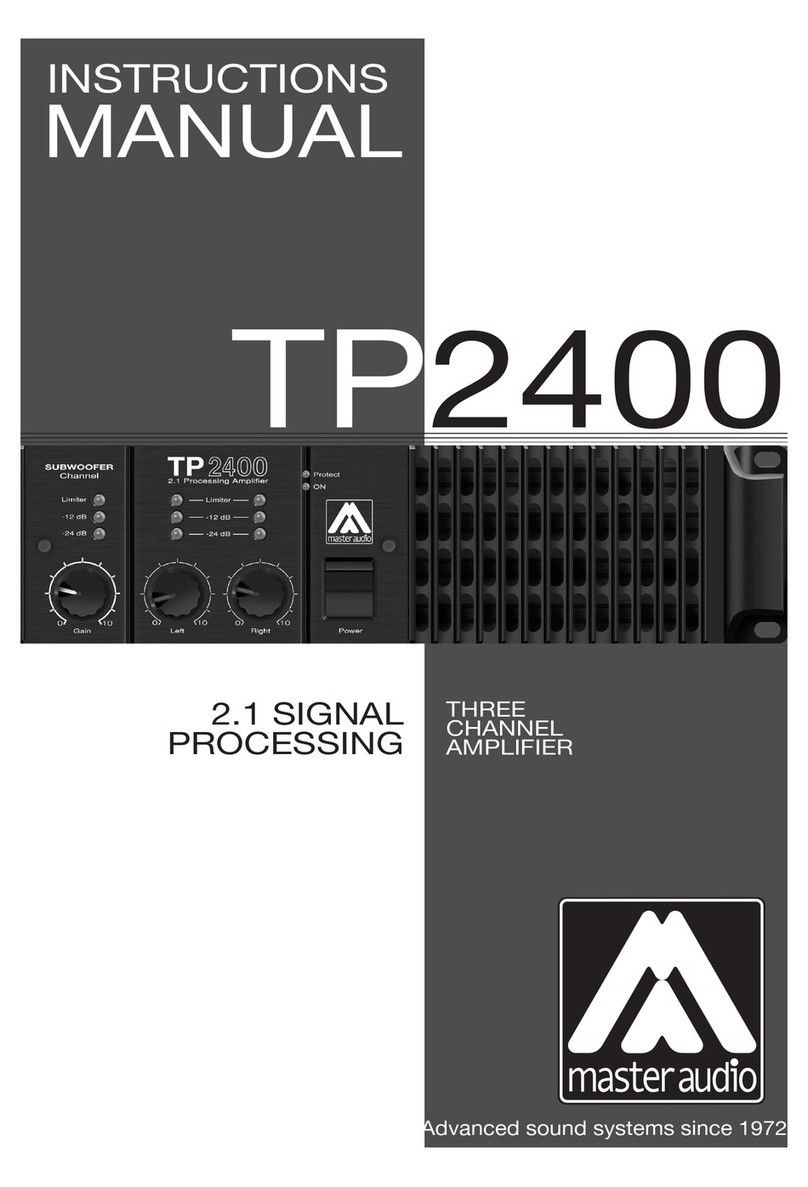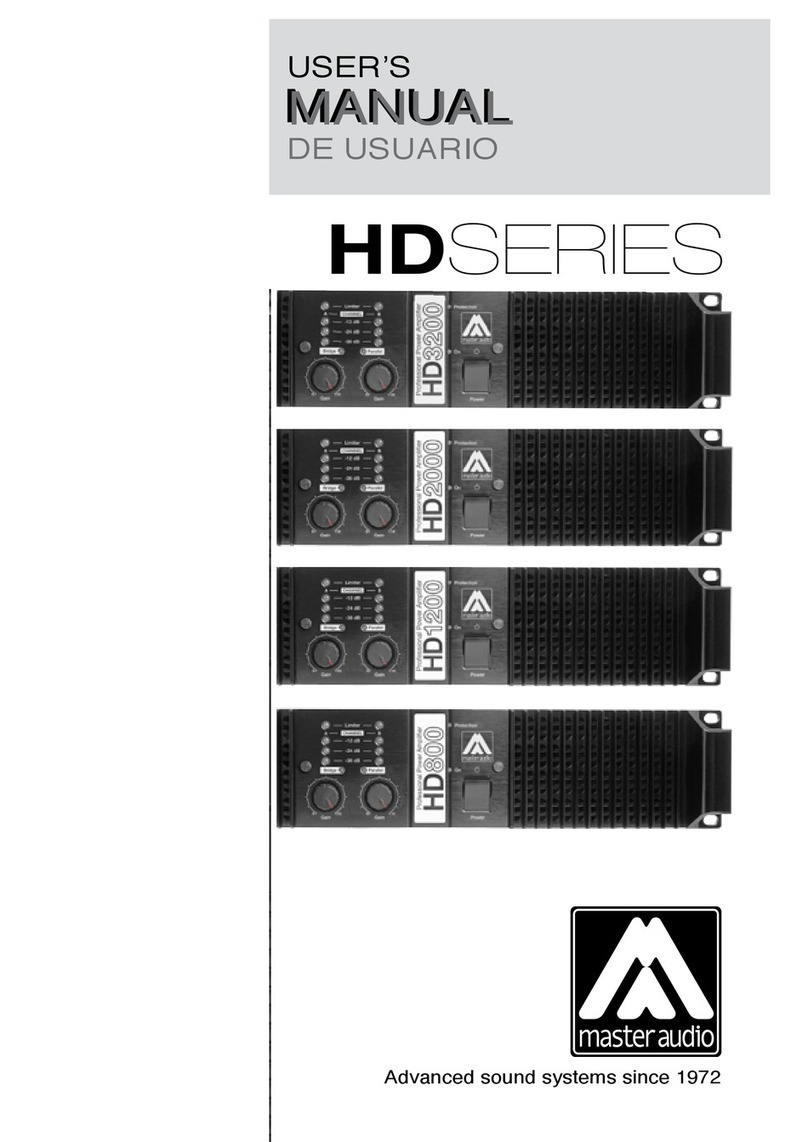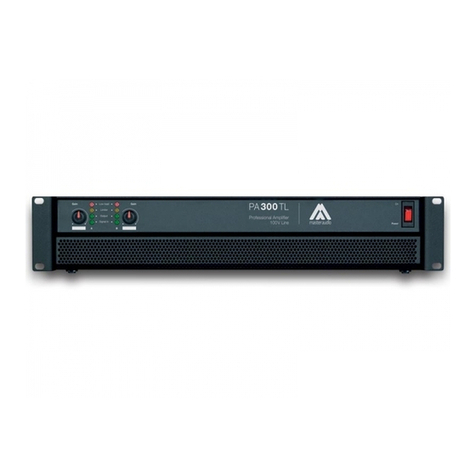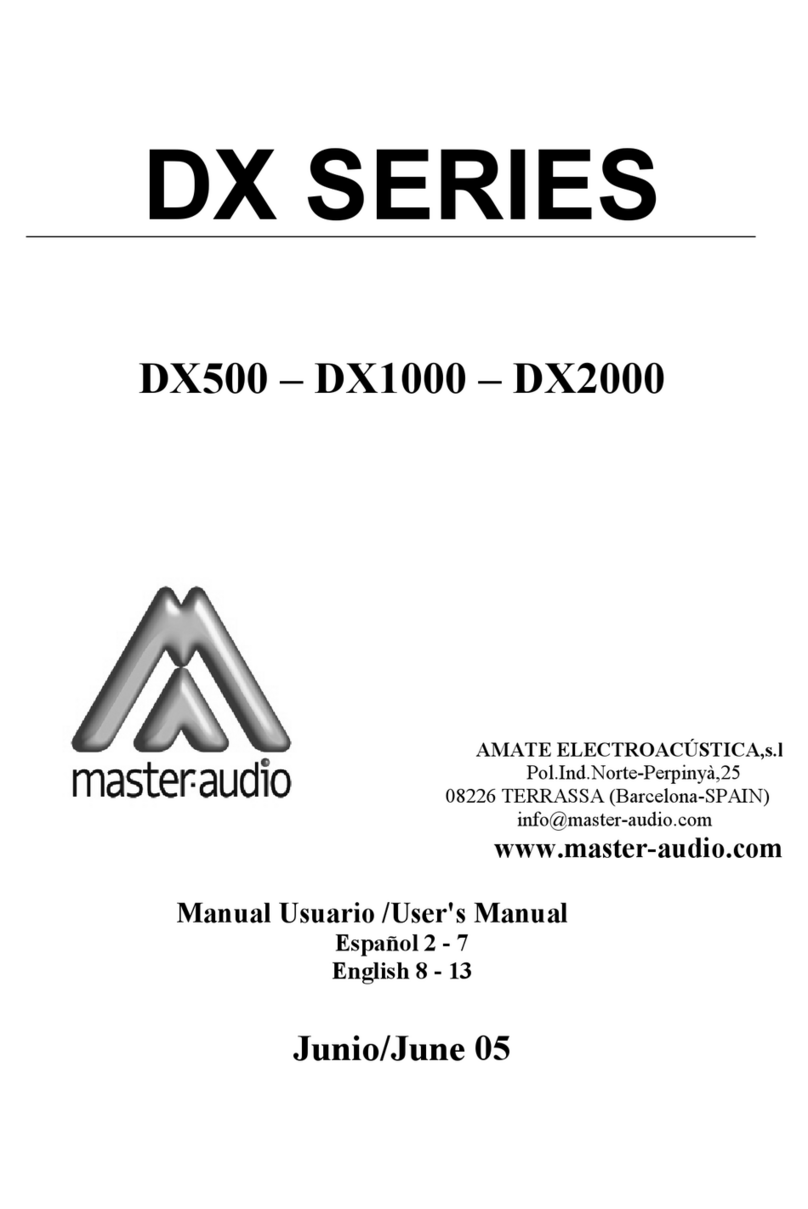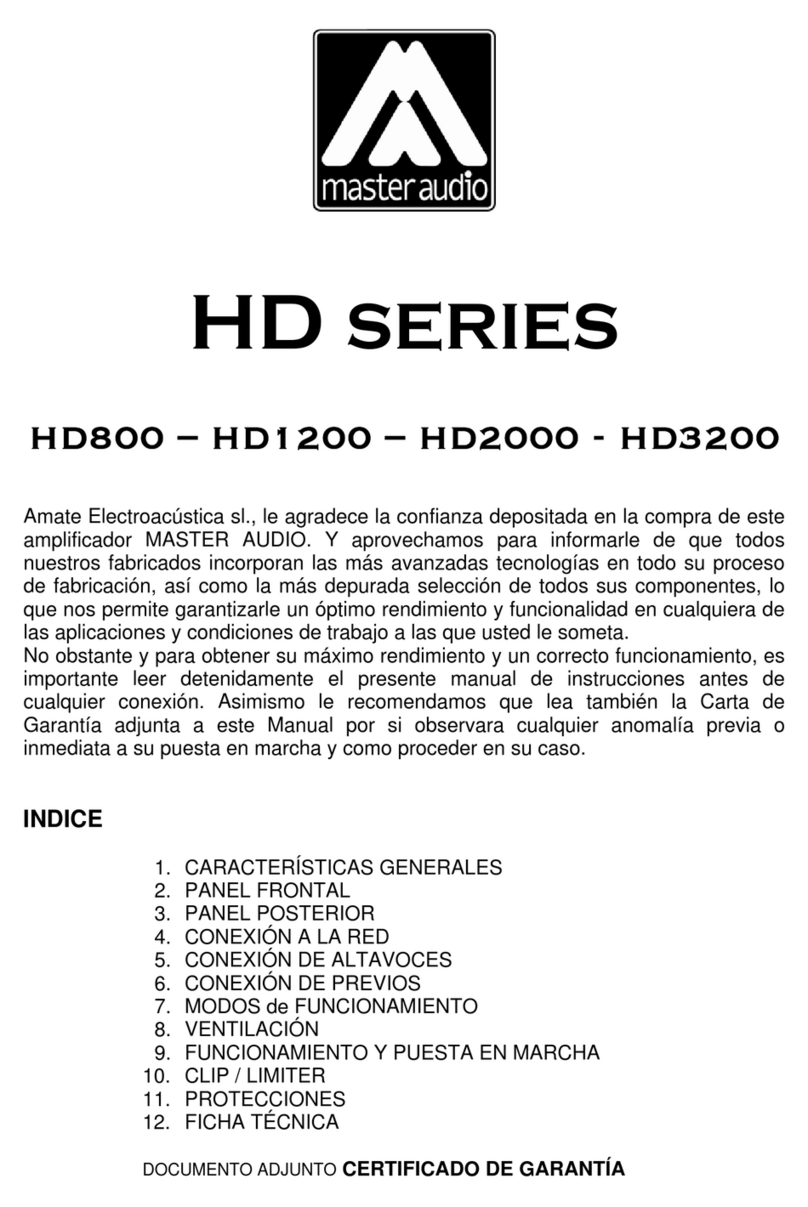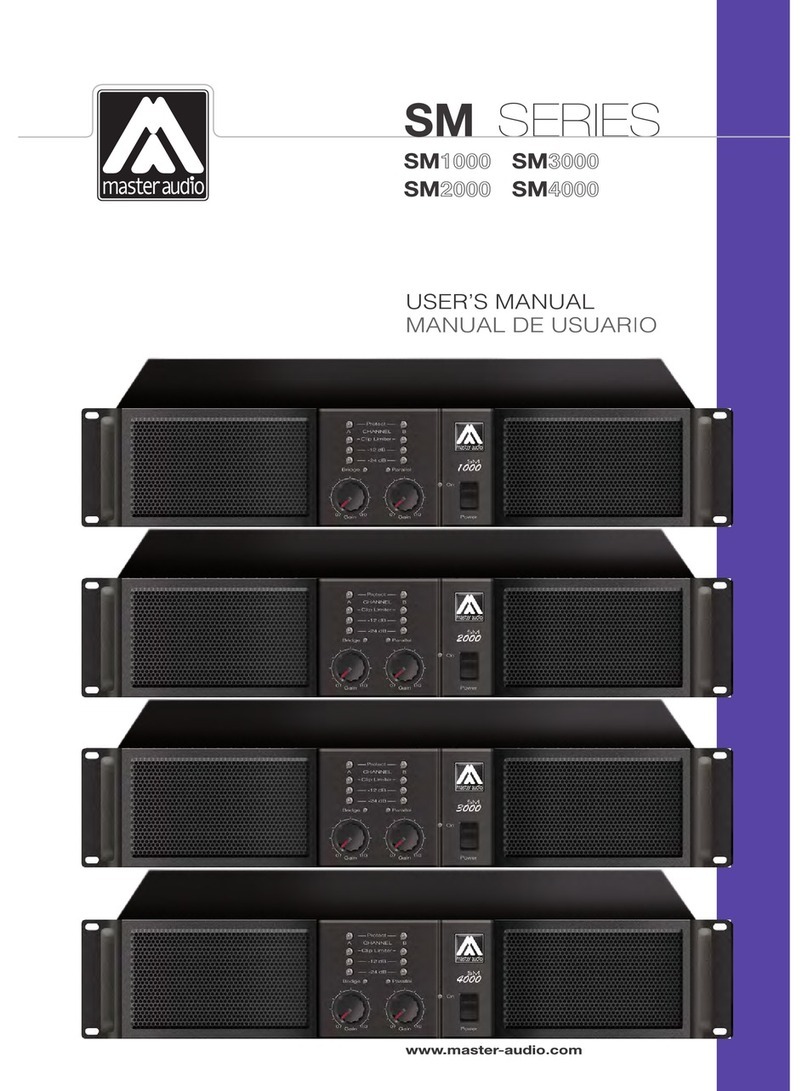
Capacidad de carga:Los amplificadores DL Series Two tienen capacidad de
corriente suficiente para aceptar cargas muy bajas (hasta 2 ?). Hay que tener en
cuenta que muchos altavoces de impedancia nominal 8 ?que utilizan filtros pasivos,
a ciertas frecuencias presentan impedancias mucho más bajas de la nominal, por lo
tanto, es recomendable usar cargas de 2 ?solo cuando se conoce perfectamente la
curva de impedancia de los sistemas de altavoces a conectar. El funcionamiento a
2?no es recomendable en lugares poco ventilados o cuando se requiera un
funcionamiento a máxima potencia continuadamente.
6 -CONEXIÓN EN MODO STEREO
Primero asegurarse de que el Selector de Modo
BRIDGE/STEREO, situado en la sección de
Entradas (Inputs) y en medio de los dos puntos de
conexión, se encuentra en la posición STEREO.
Se dispone de dos salidas para altavoces. CH A para el canal izquierdo y CH B para
el derecho, provistas de un conector Speakon, o un par de Bornes para cada una.
Cada conector Speakon, dispone de 4 puntos de conexión denominados +1, -1, +2, -
2. Se utilizarán solamente los pines +1 para el polo Positivo, y -1 para el Negativo.
Para fijar el cable (Sección 4mm máx.) se precisa una llave Allen 1,5.
Para aplicaciones móviles puede además soldarse el contacto para asegurar su
fijación.
Si se prefiere conectar mediante los Bornes, se utilizará el Borne Rojo para el polo
positivo, y el Negro para el Negativo.
7 -CONEXIÓN EN MODO BRIDGE (MONO)
Para su utilización en modo MONO, debe
posicionarse el conmutador BRIDGE/STEREO antes
mencionado, en modo BRIDGE.
Ahora se iluminará el indicador correspondiente
situado en el panel frontal y en medio de los dos
controles de volumen.
Téngase en cuenta que en esta posición la potencia de salida de ambos canales es
sumada sobre una sola salida (mono). Para trabajar en este modo se utilizará la
siguiente conexión: El polo + del altavoz se conectará al pin 1+ del Speakon, o al
Borne Rojo del CH A. Y el polo –del altavoz, al pin 1+ del Speakon, o al Borne Rojo
del CH B. La potencia entregada por el amplificador será la resultante de la suma de
los dos canales (a 4 ?), pero la impedancia de carga será de 8 ?. No se
recomiendan instalaciones permanentes en modo Bridge con impedancias inferiores
a 8 ?.
